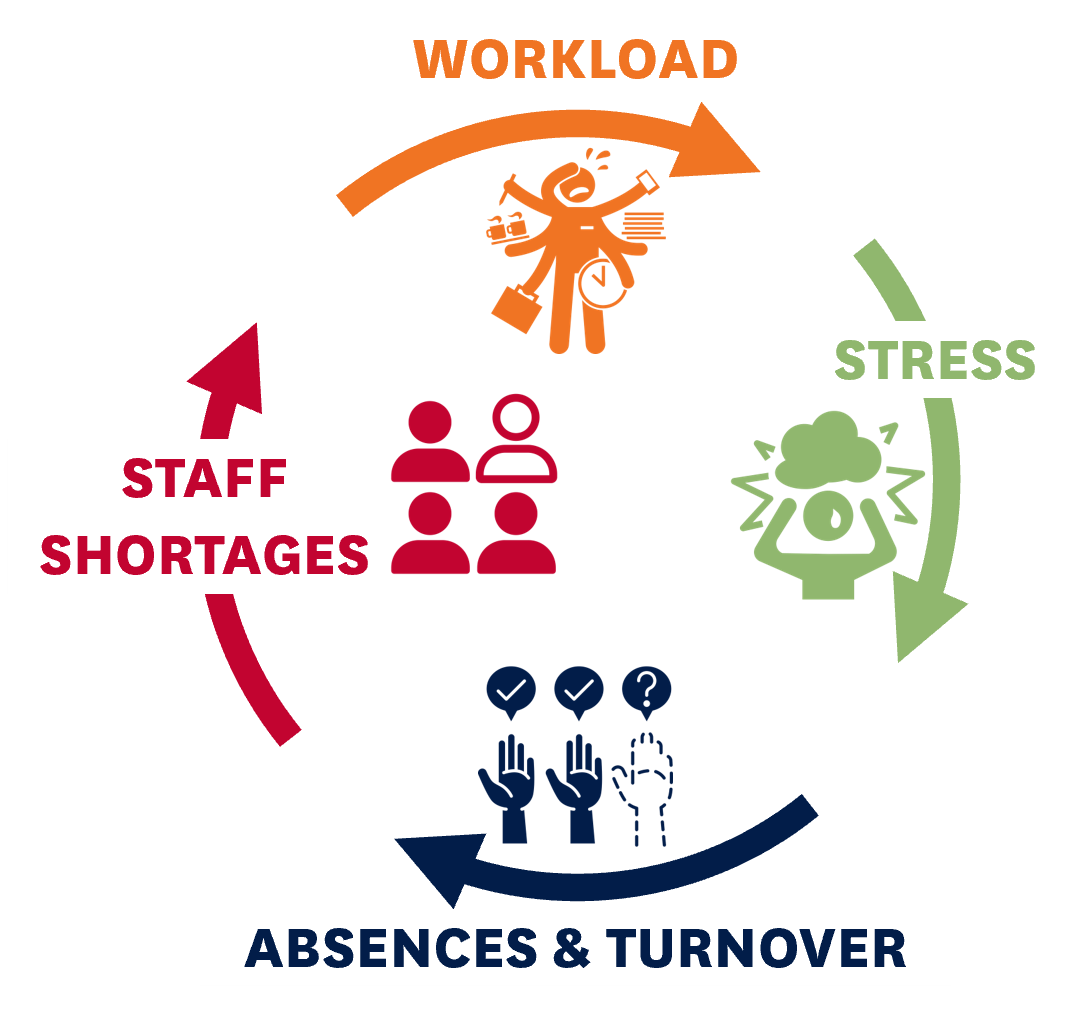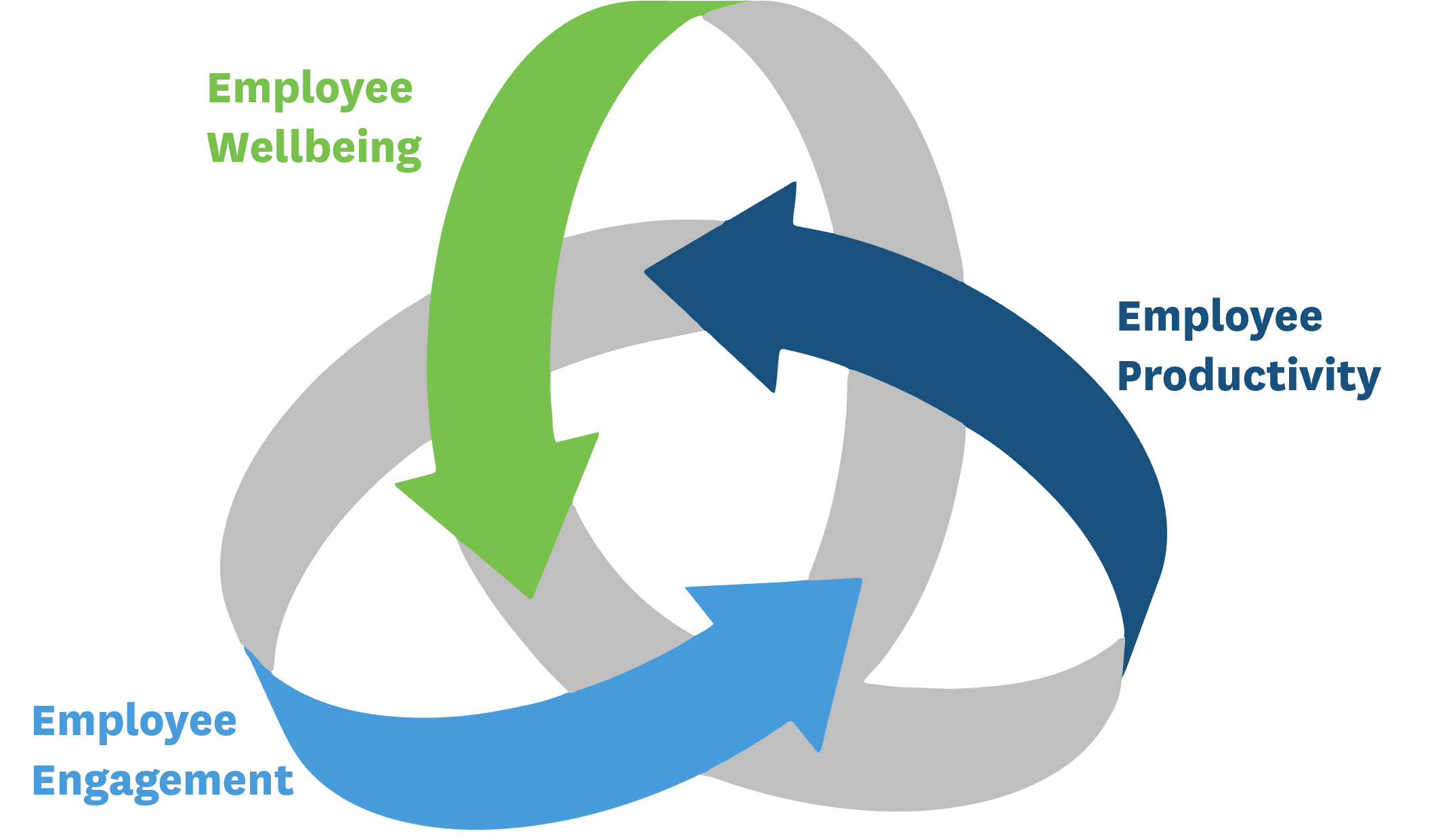How can we address K-12 staffing shortages?
Connecting with education leaders is an integral part of my role as the Program Director for Well at Work by EdCan. Across Canada, education leaders care deeply about the wellbeing of their staff. They see the impact that workload issues and staffing shortages have on the health and wellbeing their employees. If there was a simple solution to effectively address these challenges, every education leader across Canada would have already implemented it.
The reality is, there is no simple solution.
Staff recruitment and retention, and staff mental health emerged as the top two priorities on the EdCan Network’s 2024 workplace wellbeing survey. Qualitative responses emphasize the interconnection between these two priorities: workload issues are contributing to stress and burnout, resulting in increased absenteeism. Staffing shortages due to absenteeism and job vacancies are compounding workload issues. Perceptions that the “system is broken” proliferate, potentially making it more difficult to attract employees to the sector.

If there is no simple solution for escaping this vicious cycle, how can we address these challenges?
Accepting that we are dealing with a complex challenge provides insights into how to approach the situation. Complex situations have many unknowns, and the factors involved are interconnected, making it difficult to discern cause-and-effect. In a complex situation there is little agreement as to what the problem is or how to solve it. Addressing a complex situation involves collaborative, adaptive and systemic action.
In the K-12 context, addressing the current staffing shortages and promoting the wellbeing of employees in a long-term, sustainable way involves a commitment to:
- collaboration among school district leadership, unions and professional associations, individual employees, boards of trustees, and ministries of education;
- learning from experience, trying strategies to address issues, monitoring their success, adapting accordingly, and sharing promising practices across jurisdictions; and
- addressing systemic factors such as organizational structures and the working environment.
The good news is that a comprehensive and systemic approach can produce a virtuous cycle of improvement on multiple fronts. Employee wellbeing, engagement and productivity are interrelated, mutually reinforcing, and have been shown to reduce turnover and absenteeism. Furthermore, healthy employees build stronger relationships with students, colleagues, and parents, and provide higher quality instruction. All of this contributes to better outcomes for students.
 Employee wellbeing, engagement and productivity are interconnected. Image by the EdCan Network.
Employee wellbeing, engagement and productivity are interconnected. Image by the EdCan Network.
Research from Gallup shows that a “good job, with engaging work, is the very foundation of a thriving life.” This begs the question: What constitutes a good job?
Psychological safety is the foundation of wellbeing in our schools and workplaces. A review of the factors that motivate a person to either leave or stay in a particular role reveals a striking similarity to the 13 factors in the National Standard for Psychological Health and Safety:
Factors motivating employees to stay:
|
Factors motivating employees to leave:
|
How these factors contribute to an individual’s decision to leave or stay in a particular role is highly context specific. Hertzberg’s two-factor theory reminds us that it is possible to be simultaneously highly motivated and yet dissatisfied with our job. Hertzberg’s research identified two independent sets of factors relating to job satisfaction. Motivating factors, such as interesting and meaningful work, directly enhance one’s job satisfaction. Hygiene factors, such as salary or having the resources to do one’s job, do little to enhance motivation or satisfaction. Rather, the absence of a hygiene factor causes dissatisfaction.
For employees who struggle to make ends meet with their salary, the possibility of earning slightly more in another role – or another sector – may be a powerful motivator to leave their role. However, for employees who can live comfortably on their salary, earning more becomes less of a concern. Instead, other factors such as workloads, the workplace culture, or having the resources to meet the needs of their students tend to become more important considerations.
In a complex situation, good data provides insight into how we can best move forward. Quantitative data, such as the Guarding Minds at Work survey can provide a broad understanding of how different employees experience their work. However, quantitative data cannot answer questions such as “why do they experience ___?” or “what might we do about it?”. It is only by engaging employees in authentic dialogue that we can uncover these answers and identify the next best steps that we can take to support employee wellbeing and address the current staffing shortage.
If one thing has become clear in my two years as the Program Director for Well at Work it is this: no one person or group has all the answers for addressing the current challenges facing education. To support the success of our students, we must work collaboratively across all levels of K-12 education to build healthier work and learning environments that will attract and retain talented and passionate people.
Photo: Pixabay
First published in Education Canada, September 2023
IF YOU HAVE A STORY TO SHARE ABOUT HOW YOUR SCHOOL OR SCHOOL DISTRICT IS FOSTERING WELLBEING, PLEASE CONTACT KATHLEEN AT KLANE@EDCAN.CA.
Sources
American Psychological Association. (2022) Workers appreciate and seek mental health support in the workplace.
British Columbia Teachers Federation. (2023) 2022-23 BCTF Membership Survey.
Bryant, J., Ram, S., Scott, D., & Williams, C. (2023). K–12 teachers are quitting. What would make them stay? McKinsey.
Carr, E.W., Reece, A., Kellerman, G.R., & Robichaux, A. (2019) The Value of Belonging at Work. Harvard Business Review.
Gallup What is Employee Wellbeing? And Why Does it Matter?
Gill, K. (2023). Workload issues prompting teachers to quit. Alberta Teachers Association.
Lovison, V.S. & Mo, C.M. (2022). Investing in the Teacher Workforce: Experimental Evidence on Teachers’ Preferences. EdWorkingPaper: 25-528.
Morgan, I. (2021) Employees want wellbeing from their job and they will leave to find it. Gallup.
Workplace Safety and Prevention Services. (2023). New survey shows safety is critical in attracting and retaining top talent.
